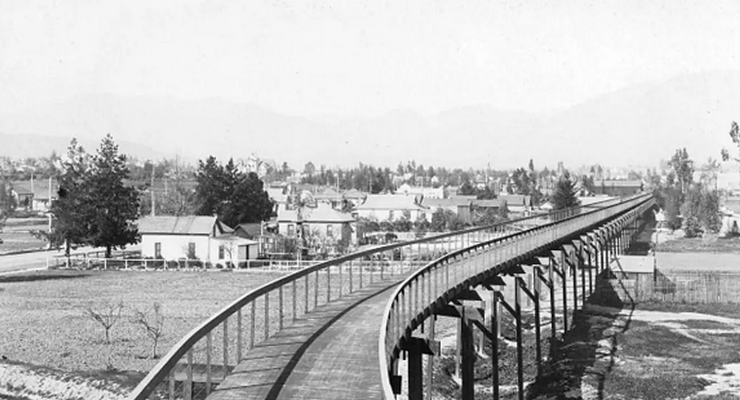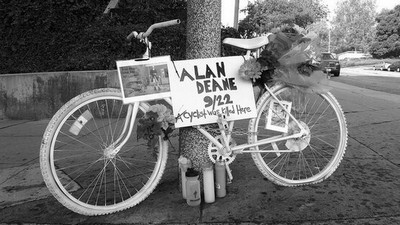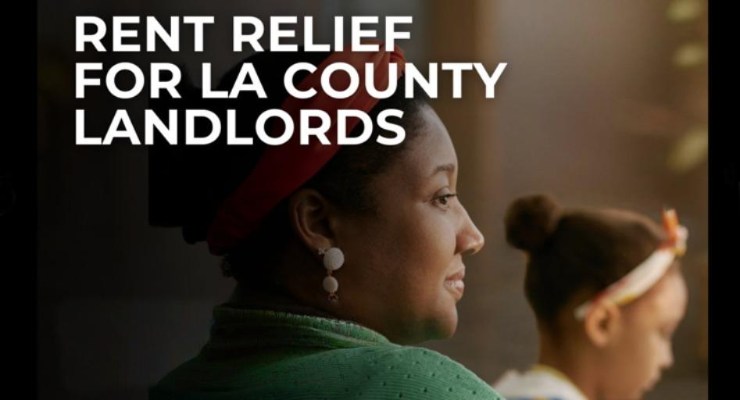
This is the seventh in a series of columns on 10 Grand Challenges to transform Pasadena’s future. Today’s column focuses on making Pasadena a bike-friendly community.
Before the Red Cars connected Pasadena to Los Angeles a century ago, there was a nine-mile elevated bikeway between the two cities. A one-way trip cost a dime. A round trip was 15 cents.
Sad to say, but in today’s world, Pasadena ranks as the fifth most dangerous city for bicyclists (out of 61 similar size communities) according to the latest figures from the California Office of Traffic Safety.
 “We have a wonderful climate, a well-defined street grid and most of the city is gently sloped,” notes former Pasadena Transportation Commissioner Blair Miller (who also served on our city’s Planning Commission.) “There’s great potential for people to get around without a car – and in fact that principle (“Pasadena will be a city where people can circulate without a car”) is embedded one of the eight overriding pillars of our city’s General Plan.”
“We have a wonderful climate, a well-defined street grid and most of the city is gently sloped,” notes former Pasadena Transportation Commissioner Blair Miller (who also served on our city’s Planning Commission.) “There’s great potential for people to get around without a car – and in fact that principle (“Pasadena will be a city where people can circulate without a car”) is embedded one of the eight overriding pillars of our city’s General Plan.”
Yet the City has done little to actually make it safe and convenient to navigate our streets. In 2015, the City Council adopted a Bicycle Transportation Action Plan that has resulted in very little action. Last fall, the Council heard an update on progress. It turns out only two of the nine primary projects are currently underway, with completion scheduled for later this year. At this rate, it will be a quarter century before Pasadena finishes its “Action Plan.”
Meanwhile the planet is burning.
Of course, more local residents using bikes to circulate within Pasadena won’t halt global climate change. But reducing the amount of trips taken by car means healthier people, cleaner air and less traffic as well as fewer carbon emissions. Bikes can also solve the “first mile, last mile” challenge for public transit since it can bring almost everyone in central Pasadena within a 5 minute ride to a train or bus stop. Miller sees the increasingly affordable “e-bikes” as a “gamechanger” for people who are thinking about venturing out on two wheels.
The Council last week took an encouraging step forward. City staff recommended against providing incentives for residents to purchase e-bikes. But the members of the Municipal Services Committee (Vice Mayor Williams and Councilmembers Lyon, Johnson and Hampton) overrode staff opposition and instructed them to return in 60 days with a plan. It helped that there were 91 letters in support and several members of the public lined up to speak. Miller is a member of the group that helped spur the outpouring. The Pasadena Complete Streets Coalition was founded ten years ago after cyclists Alan Deane, Jocelyn Young and Phillip O’Neill were each fatally hit by drivers on Pasadena streets. “Complete streets” is not just for bicyclists, Miller emphasizes. The Coalition is committed to making streets safer for pedestrians and transit users as well.
For more people to venture onto Pasadena’s mean streets, however, we must tame the conflicts between speeding cars and everyone else. Protected bike lanes are the most effective at separating cars and cyclists, but they’re costly, given all the added expenses imposed on public works projects. Another part of the solution for bike safety comes with an added benefit for neighbors – slowing the speeding traffic that makes life dangerous for them, their children and their pets.
“At 40 miles an hour, a bicyclist has a 20% chance of survival,” Miller notes. “At 20 miles an hour – a more reasonable speed for residential streets, a bicyclist has an 80% chance of seeing another day.”
Speed (and distractions) kill – and maim. Creating an interconnected network of streets where cars move more slowly (dubbed “Roseways” in the City’s Action Plan) or where bike lanes are protected (“Greenways”), gives a much broader segment of the population the choice to peddle to the store or school or park.
“This is not about forcing people out of their cars,” Miller emphasizes. “It’s giving more people an alternative to always having to get in their car to go everywhere that they want to go. Everyone knows the environmental benefits of biking,” she observes. “What we see in other cities where biking is made safer is that people enjoy a quieter, slower pace of neighborhood life. A community has a different feel when you are not whizzing by wrapped in a ton of steel and plastic. People on bikes can wave to – and maybe get to know – their neighbors. Making our streets safer for bikes also makes them more enjoyable to live on. It’s a win-win.”
It’s hard to argue with Miller’s goals. To achieve them, the City must speed up its “Action Plan” – so we can all slow down and enjoy a safer, more livable and more environmentally sustainable community.
Rick Cole is a current Pasadena Planning Commissioner and a former Mayor of Pasadena. He serves as Chief Deputy Controller for the City of Los Angeles.
See Also: Rick Cole: Ten Grand Challenges to Transform Pasadena’s Future – Pasadena Now
- Remove the concrete channel from the Arroyo: the beautiful valley running through our city is one of our greatest assets. Back in the Thirties, our default for handling periodic flooding was with engineering. We now know how to divert storm water to percolate back into the ground instead of flushing it out to sea. Removing the ugly channel would create a completely different feel to the lower Arroyo, Pasadena’s pre-eminent natural recreational gem
- Remove and reclaim the 710 stub: Caltrans deliberately dug a huge hole and filled it with concrete to push traffic into residential neighborhoods in a failed attempt to force South Pasadena to surrender to the bulldozers. Now that the City of Pasadena has title to the property, we can eliminate this scar on the landscape and build parks, affordable housing and community assets to reknit the southern part of our city.
- Connect Old Pasadena to PCC with a streetcar: There is Federal funding to route a street car loop on Union and Green that would connect our historic core with the Playhouse District, South Lake and a campus with 30,000 students. It would link our greatest assets (Caltech would also be in walking distance) to the regional light rail stop at Memorial Park and make navigating between them easy and non-polluting, reducing traffic.
- Transform the Central Library into a 24/7 Learning Center: Life-long learning doesn’t just take place in formal schools — libraries have always been a place providing access to people of all ages and incomes to access learning. Books are just one form — but classes, maker spaces, speakers, conferences and activities could enliven the classic building which needs over $100 million in seismic upgrades which shouldn’t just be spent to put back books.
- Create an Affordable Housing Authority: The City, School District and PCC should partner to use all available public land for creating workforce, student and affordable housing. With State mandates to build 6000 units of affordable housing in Pasadena over the next eight years, the public sector should take the lead to ensure maximum benefits to our local residents.
- Replace outdated zoning with a new design code: Pasadena relies on a Design Commission to guide development of higher density apartments and condos — and the results are less than wonderful. The State now insists on “objective standards” — but Pasadena doesn’t have them for its high density development. Let’s make sure new development to provide needed housing is also compatible with our community’s high standards for design. The issue is not just how they look, but more importantly, how they function to compliment the neighborhoods around them.
- Individualize help for the homeless: Community Solutions, a nationwide program based on extensive research, advocates for a “by name” registry of those accessing public and non-profit services so unhoused individuals and families aren’t bounced around uncoordinated programs and agencies. Sharing data can ensure the homeless get the help — and housing — they need, quickly and humanely.
- Convert to carbon-free energy: Pasadena 100 is pushing our public utility to walk the walk of its environmentally-friendly talk by eliminating coal and natural gas from electric generation by 2035. With strong Federal support for renewable energy, it’s clearly doable — so why isn’t Pasadena leading?
- Establish car-free zones: The pandemic has transformed many streets around the world into pedestrian zones that now are full of life and people. Businesses and residents love it! Let’s start with weekends and shut down Colorado between Fair Oaks and Pasadena Avenue. Or South Lake between Del Mar and California? Or the Colorado Street Bridge. Nearly everyplace it’s been tried, including here in Southern California, it is quickly so popular it goes year-round.
- Make Pasadena bike-friendly: Countries like Holland and cities from Davis to Paris used to be unsafe and unattractive to bicyclists. Skeptics doubted that people would bike — but when protected bike lanes connect where people want to go, the shift happened more quickly than anyone imagined. Biking is cheaper and healthier for individuals and the planet. Why does Pasadena lag cities in the region like Long Beach, Santa Monica and Culver City?


















